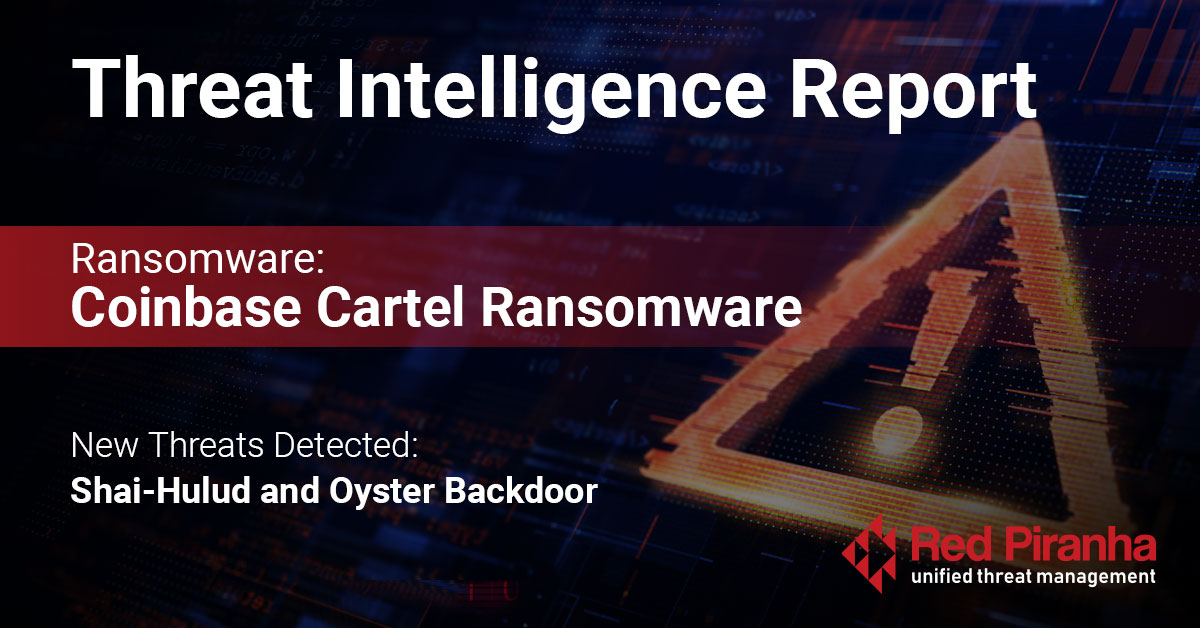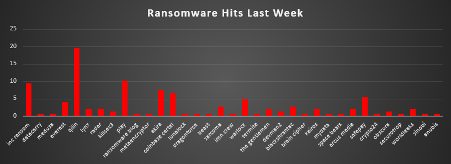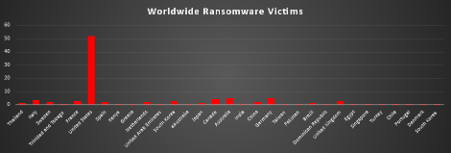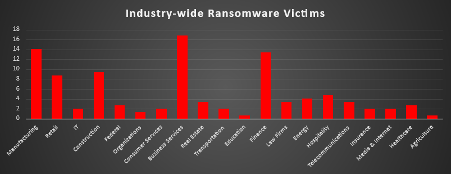
| New Threats Detection Added | • Shai-Hulud • Oyster Backdoor |
|
Detection Summary
|
|
|
Threat Protections Integrated into Crystal Eye
|
197 |
|
Newly Detected Threats
|
20 |
Weekly Detected Threats
The following threats were added to Crystal Eye this week:
|
Threat name:
|
Shai-Hulud | |||||||||||||||||||||||||||||||||||||||||||||||||||||||
|
Windows malware loader delivered via phishing (ISO/ZIP+LNK) or trojanised installers. Uses PowerShell/WSH to fetch a second stage over HTTPS, sets persistence (Run keys / Scheduled Tasks), does basic discovery + credential theft, and can stage data exfil or ransomware.
|
||||||||||||||||||||||||||||||||||||||||||||||||||||||||
|
Threat Protected:
|
01 | |||||||||||||||||||||||||||||||||||||||||||||||||||||||
|
Rule Set Type:
|
|
|||||||||||||||||||||||||||||||||||||||||||||||||||||||
|
Class Type:
|
Malware | |||||||||||||||||||||||||||||||||||||||||||||||||||||||
|
Kill Chain:
|
|
|||||||||||||||||||||||||||||||||||||||||||||||||||||||
|
Threat name:
|
Oyster Backdoor | ||||||||||||||||||||||||||||||||||||||||||||||||||||||||||||
|
Cross-platform backdoor used for remote command execution, file ops, and data exfiltration. Typically delivered via phishing or trojanised installers, establishes HTTPS-based C2, sets persistence (services/registry on Windows; cron/systemd on Linux), and may perform basic discovery and credential theft prior to lateral movement.
|
|||||||||||||||||||||||||||||||||||||||||||||||||||||||||||||
|
Threat Protected:
|
31 | ||||||||||||||||||||||||||||||||||||||||||||||||||||||||||||
|
Rule Set Type:
|
|
||||||||||||||||||||||||||||||||||||||||||||||||||||||||||||
|
Class Type:
|
Malware | ||||||||||||||||||||||||||||||||||||||||||||||||||||||||||||
|
Kill Chain:
|
|
||||||||||||||||||||||||||||||||||||||||||||||||||||||||||||
Updated Malware Signatures (Week 4 - September 2025)
|
Threat
|
Description
|
|
|
XWorm
|
A Remote Access Trojan (RAT) and malware loader that's commonly used in cyberattacks to give attackers full remote control over a victim's system. It's part of a growing trend of commercialised malware sold or rented on dark web forums, often under the guise of a “legitimate tool.”
|
| Ransomware Report | |
|
The Red Piranha Team conducts ongoing surveillance of the dark web and other channels to identify global organisations impacted by ransomware attacks. In the past week, our monitoring revealed multiple ransomware incidents across diverse threat groups, underscoring the persistent and widespread nature of these cyber risks. Presented below is a detailed breakdown of ransomware group activities during this period. Ransomware Victims – Weekly Overview Qilin led the ransomware ecosystem this week with 19.59% of reported incidents, reinforcing its dominance as one of the most aggressive and persistent threat actors. Play followed at 10.14%, continuing to demonstrate steady operations, particularly against organisations with weaker security postures. Inc Ransom matched this activity with 9.46%, showing consistent campaigns and reinforcing its position as a key mid-tier operator. Akira accounted for 7.43%, while Coinbase Cartel registered 6.76%, both maintaining momentum with sustained targeting across multiple industries. SafePay also contributed significantly at 5.41%, reflecting its stable role in the current ransomware ecosystem. Other notable presences included Warlock (4.73%) and Everest (4.05%), while Sarcoma (2.7%), BlackShrantac (2.7%), and The Gentlemen (2.03%) each logged meaningful mid-level activity. Lynx, Radar, Kairos, Arcus Media, and WorldLeaks all recorded 2.03% apiece, maintaining visibility in the mid-tier landscape. A long tail of smaller actors, including KillSec3, Devman2, Obscura, Datacarry, Medusa, Ransomware Blog, Metaencryptor, Lunalock, DragonForce, Beast, IMN Crew, Termite, Brain Cipher, MyData, Space Bears, Crypto24, Securotrop, Sinobi, and Anubis, each accounted for 0.68–1.35%. While their activity is individually limited, their collective presence illustrates the fragmented and diverse nature of the ransomware threat landscape. |

Coinbase Cartel Ransomware
Red Piranha assesses Coinbase Cartel as a financially motivated extortion collective operating since mid-2025, formed from ShinyHunters, Scattered Spider, and Lapsus$ affiliates. While their leak site currently emphasises data exfiltration only, intelligence indicates the group is actively developing the shinysp1d3r ESXi-targeted RaaS, suggesting an imminent transition to double-extortion ransomware operations.
Detailed TTPs
Initial Access
Coinbase Cartel gains entry through insider recruitment and bribery of third-party contractors, abuse of valid accounts, and vishing techniques that trick users into authorising malicious OAuth applications.
Detections: sudden administrative logins from Tor/VPN IPs; anomalous OAuth approvals; employee reports of bribery or coercion.
Execution
In cloud environments, custom Python scripts mimic Salesforce Data Loader to mass-exfiltrate data. On-premises, the shinysp1d3r loader executes in memory via shell scripts on ESXi hosts, retrieving the encryptor and launching parallel VMDK encryption while disabling snapshots.
Detections: unknown shell script execution on ESXi; rapid high-entropy file writes to datastore paths; snapshot disablement events.
Persistence
Persistence is achieved through long-lived OAuth tokens, malicious connected apps, or by adding SSH keys and hidden accounts on servers.
Detections: unrecognised admin users; anomalous SSH authorized_keys entries; OAuth apps not deployed by IT.
Privilege Escalation
Privilege escalation relies primarily on compromised admin credentials. In enterprise environments, escalation may also involve credential dumping or leveraging unpatched privilege escalation flaws.
Detections: abnormal LSASS access attempts; use of escalation binaries or drivers; privilege assignment to unusual accounts.
Defence Evasion
The group clears and disables logs on ESXi, disguises malicious applications as legitimate tools, and uses Tor/VPN infrastructure for anonymity.
Detections: syslog forwarding disabled; mass log truncation; newly created apps with names mimicking Salesforce Data Loader.
Discovery
Discovery includes enumeration of VMware datastores, virtual machines, Active Directory objects, and file shares to locate high-value data.
Detections: unusual vCenter API queries; enumeration of domain admin groups from non-IT accounts; aggressive SMB share enumeration.
Lateral Movement
Movement between systems is achieved using SSH with root credentials across ESXi hosts and potentially RDP or PsExec in Windows environments.
Detections: new SSH sessions between hypervisors; PsExec activity from accounts outside IT; abnormal RDP logons from Tor/VPN IPs.
Collection & Exfiltration
Data is staged and exfiltrated via cloud APIs, encrypted channels, or third-party storage. Archives are created to compress large data sets prior to transfer.
Detections: creation of large compressed archives; abnormal high-volume API exports; outbound encrypted transfers to Tor nodes.
Impact
Current operations emphasise data disclosure and extortion without encryption. With shinysp1d3r active, expected impact will include mass ESXi encryption resulting in enterprise-wide disruption.
Detections: VM snapshot disablement; datastore file renaming; ransom note artifacts once shinysp1d3r is deployed.
MITRE ATT&CK Mapping
|
Tactic
|
Technique (ID)
|
Observed Use
|
|
Initial Access
|
Valid Accounts (T1078); Trusted Relationship (T1199); Vishing (T1566.004)
|
Bribery, stolen creds, voice phishing for OAuth/SSO approvals
|
|
Execution
|
Unix Shell (T1059.004); Memory-resident loader → encryptor
|
Shell scripts on ESXi, Python data dump scripts
|
|
Persistence
|
Create Account (T1136); Valid Tokens (T1078)
|
OAuth tokens, malicious apps, hidden SSH accounts
|
|
Privilege Escalation
|
Privileged Credentials (T1078.004); OS Credential Dumping (T1003)
|
Use of admin creds; possible LSASS dumps
|
|
Defence Evasion
|
Clear Logs (T1070); Disable Logging (T1562.002); Proxy/Tor (T1090.003)
|
Log clearing on ESXi; Tor/VPN for exfiltration
|
|
Discovery
|
Cloud Service Discovery (T1580); Remote System Discovery (T1018)
|
Enumerates vCenter, AD, file shares
|
|
Lateral Movement
|
SSH (T1021.004); RDP (T1021.001)
|
SSH across ESXi; RDP/PsExec in Windows
|
|
Collection
|
Data from Information Repositories (T1213); Automated Collection (T1119)
|
Bulk CRM/API exports; staging archives
|
|
Exfiltration
|
Exfil to Cloud Storage/API (T1567.002); Exfiltration Over C2 (T1041)
|
Encrypted transfers via APIs, Tor, or cloud storage
|
|
Impact
|
Data Encrypted for Impact (T1486)
|
Projected shinysp1d3r ESXi encryption
|
IOCs
Leak Site: fjg4zi4opkxkvdz7mvwp7h6goe4tcby3hhkrz43pht4j3vakhy75znyd.onion
C2/Infrastructure: affiliateshinysp1d3r[.]com (payload fetch server)
Email: shinycorp@tuta[.]com, shinygroup@tuta[.]com
Mitigation Summary — Coinbase Cartel / shinysp1d3r
- Harden Access: Enforce MFA everywhere (cloud, VPN, vCenter). Limit contractor access with the least privilege and strict monitoring.
- Protect ESXi & Cloud: Disable ESXi SSH by default, push logs to secure syslog, and restrict OAuth app creation in SaaS platforms.
- Detect Early: Monitor for unusual CRM exports, OAuth approvals, large archive creation, and syslog/service tampering on ESXi. Flag logins from Tor/VPN nodes.
- Prepare Response: Maintain ransomware-specific IR playbooks, isolate compromised accounts/hosts quickly, and pre-stage regulator/customer comms.
- Backup & Recovery: Keep offline/immutable backups and regularly test ESXi restore drills to ensure rapid recovery.
- Awareness & Training: Train staff and contractors to resist bribery and vishing tactics.
Ransomware Victims Worldwide
The United States dominated the ransomware landscape this week, accounting for 52.03% of all reported victims. Its dominance highlights the continuing preference of threat actors to focus on high-value targets in North America, where the digital footprint is vast and enterprises are often pressured into ransom negotiations due to operational criticality.
Germany (4.73%) and Australia (4.73%) followed as the next most impacted nations. Both countries remain frequent targets due to their advanced industrial bases, highly digitised infrastructures, and roles as global supply chain hubs. Canada also reported 4.05%, reinforcing its steady presence among top-targeted nations.
Mid-tier targeting was observed in Italy (3.38%), France (2.7%), South Korea (2.7%), and the United Kingdom (2.7%), underscoring Europe and Asia’s continued exposure to ransomware campaigns. Additional notable activity was recorded in Sweden, Spain, Netherlands, and China (each at 2.03%).
A long tail of countries reported isolated incidents (each at 0.68–1.35%), including Thailand, Japan, Brazil, Dominican Republic, Portugal, Chile, Denmark, Singapore, Turkey, Egypt, Taiwan, Pakistan, India, Kenya, Greece, United Arab Emirates, and Namibia. While individually small, these figures emphasise ransomware’s global reach, extending beyond core Western economies into Latin America, Africa, and Asia-Pacific.
This distribution reflects ransomware’s dual strategy: a heavy concentration of attacks in the U.S. and major European economies, paired with opportunistic exploitation of smaller or emerging markets where defences may be less mature.

Industry-wide Ransomware Victims
Business Services topped the list this week with 16.78% of ransomware incidents, reflecting adversaries’ continued focus on IT, consulting, and outsourcing firms. These organisations serve as gateways to multiple client environments, amplifying the impact of a single compromise.
Manufacturing followed at 14.09%, reaffirming its position as one of the most consistently targeted sectors due to its operational criticality and low tolerance for downtime. Finance also ranked high with 13.42%, highlighting attackers’ interest in institutions that handle sensitive data and liquidity pressure points, often forcing quicker ransom negotiations.
Construction logged 9.4%, demonstrating adversary preference for industries with complex supply chains and decentralised digital infrastructures. Retail accounted for 8.72%, underscoring its persistent vulnerabilities tied to customer payment systems and distributed operations.
Mid-tier victims included Hospitality (4.7%), Energy (4.03%), Law Firms (3.36%), Telecommunications (3.36%), and Real Estate (3.36%). Each of these verticals presents unique high-value data and operational leverage points attractive to extortion-driven campaigns.
Sectors with moderate but notable impact were IT (2.01%), Transportation (2.01%), Insurance (2.01%), Media & Internet (2.01%), Healthcare (2.68%), Federal (2.68%), Consumer Services (2.01%), and Organisations (1.34%), reflecting ransomware’s wide net across both private enterprises and public entities.
At the lower end, Education (0.67%) and Agriculture (0.67%) registered small shares of reported incidents. Though their numbers are limited, these sectors remain vulnerable due to typically weaker cyber defences and growing digitisation.

